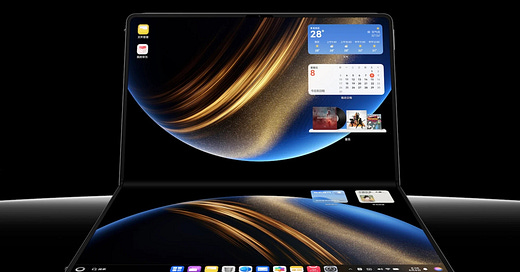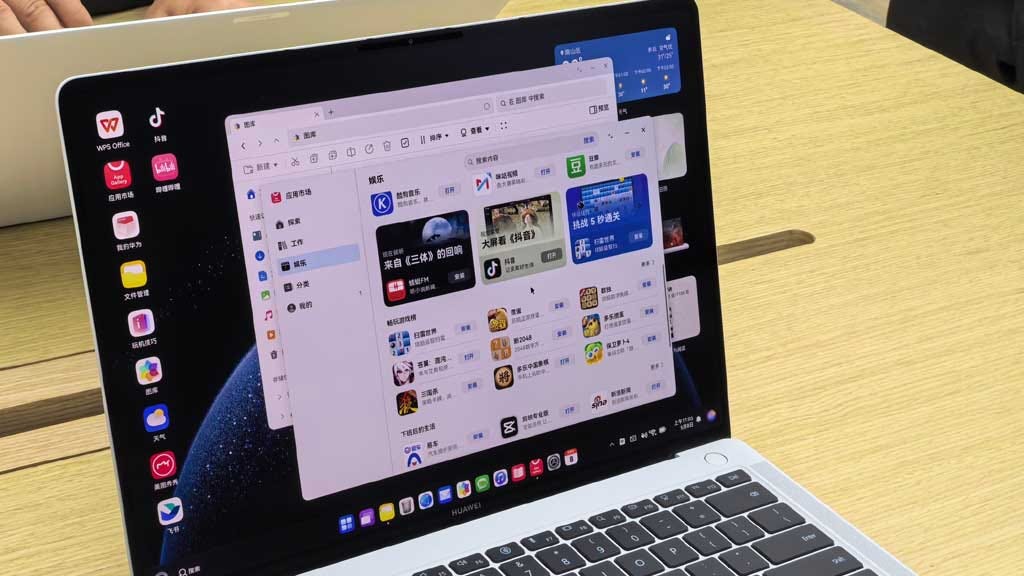Growth Dragons Weekly: Huawei’s HarmonyOS Pushes Tech Independence, Electronics Sales Surge 200% on Alibaba and JD
What happened in China this week:
Huawei Launches HarmonyOS for Laptops and Unveils Foldable PC
China’s Subsidy Program Boosted Alibaba and JD Electronics Sales by Over 200%
Investors Believe Ping An Stock Is Worth More Than HK$55.02
DiDi Expands Fast Overseas While Ramping Up Profits at Home
Top Numerical: China’s Deep Tech Ambitions Go Public
#1 Huawei Launches HarmonyOS for Laptops and Unveils Foldable PC
First, Huawei made great phones. Then it pivoted to EVs and AI chips. Now, it’s launching HarmonyOS for laptops and even a foldable PC.
Huawei’s latest move—rolling out its in-house HarmonyOS 5.0 on personal computers—marks a bold escalation in its push for tech self-sufficiency. This isn’t just about creating an alternative to Windows or macOS. It’s about breaking free from U.S. tech dependence, and aligning with China’s broader strategy to build a fully domestic tech stack.
The geopolitical context is clear. Since being blacklisted by the U.S. in 2019 for alleged sanctions violations, Huawei has been cut off from Google’s Android ecosystem and key American technologies. That chokehold nearly destroyed its global smartphone business. But instead of retreating, Huawei doubled down—starting with HarmonyOS, first built for smart devices, then extended to smartphones, and now reaching full-fledged PCs.
At its 2025 PC launch, Huawei unveiled two new HarmonyOS-powered laptops—the foldable MateBook Fold and the conventional MateBook Pro. Both run on the new HarmonyOS 5.0, which, crucially, is now fully stripped of Android code. This makes it a true independent OS—the first of its kind in China at scale.
Of course, building an operating system is not just a coding problem—it’s an ecosystem problem. Huawei understands this. At launch, it announced over 1,000 applications already optimized for HarmonyOS PCs, including core tools like WPS Office, Feishu (ByteDance’s work suite), and a native version of WeChat. As of mid-2025, the HarmonyOS AppGallery now has 20,000+ apps, up from 15,000 at the end of 2024. That’s still far behind iOS and Android, but the direction is clear: the developer community is starting to lean in—especially domestic ones.
Still, HarmonyOS has gaps. Its version of WeChat lacks major social features like sharing to Moments. Many apps are stripped-down compared to their Android or iOS versions. But Chinese users, fueled by a strong undercurrent of consumer nationalism, are showing increasing willingness to adopt local platforms—warts and all. For them, Harmony isn’t just a product—it’s a statement.
And Huawei isn’t stopping at PCs. The company sees HarmonyOS as the software backbone of the next digital wave—from phones and appliances to EVs, factory equipment, and robots. Apple built a vertically integrated ecosystem around its OS. Huawei wants to do the same, but adapted for China’s own industrial and strategic needs. That vision is already taking shape—ChinaSoft recently launched a HarmonyOS-powered robot, showing early signs of industrial adoption.
The HarmonyOS expansion into laptops is more than just a product release—it’s part of a broader blueprint. Every major Chinese tech company is rethinking its future around supply chain resilience, domestic tech substitution, and geopolitical risk. Huawei just happens to be the one leading the charge.
We are likely only seeing the beginning. If HarmonyOS gains meaningful traction in PCs and industrial devices, it won’t just be an operating system. It’ll be a platform—one that powers China’s next phase of tech sovereignty.




